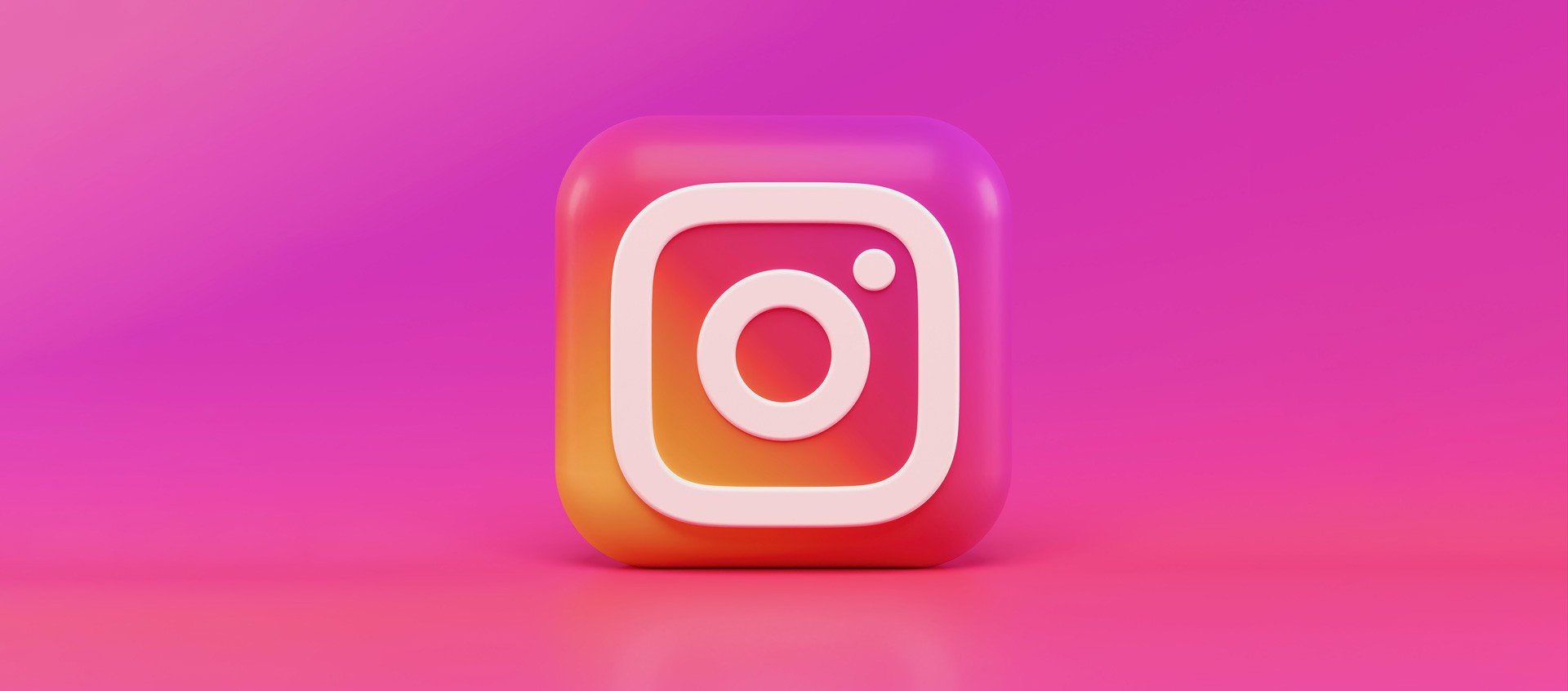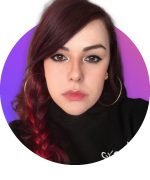Our first episode was dedicated to artificial intelligence tools that help fellow marketers and designers reduce content creation costs. Still, today our topic is broader and more interesting in terms of communication with the audience. So our topic is: how to create a brand media that can cover all marketing channels and become a helpful tool to provide your brand new sales, new customers, and new readers.
Get 10% Discount on Your First Order at Contenteam!
Does Your Brand Stand for Consistency?
P: Before we go into creating any branded content, we have to develop a consistent brand identity. We cannot go and create digital content that is branded, and that is consistent if we do not have an offline brand that is consistent. I do not mean that you must have a shop, or you have to be selling your stuff offline. What I mean is that you need to have decided on at least your typography and colors, you have to have a consistent logo (that is the same for all the platforms) you need to develop your brand voice. Brand voice is not only written one; it's not only about the text; it's also about how you communicate your brand ideas through your imagery and videos. All of that needs to be consistent and done before you go into posting anything online because otherwise, it will be challenging to keep track of everything later on.
Probably, the easiest thing to do before you go into creating any branded social media content is to create a brand manual or a design guide, or however you want to call it, and where you want to include as much helpful information that will guide all of those people who are responsible for posting content for you. Let's say you have a person responsible for Instagram and then another one responsible for TikTok. You want to share the same document with whoever posts for to understand how your brand should look online, and even if you're doing it yourself, it's just a good touch point to come back to and see if you're doing everything right away.
The things you want to put in your brand style, or a brand book, are your colors, including the dos and don'ts. Next, you want to include typography, mention the correct way of doing things, and then something that must be avoided. It might be specific text placements, color combinations, font combinations, font and object combinations, etc. Then you want to think about the images that you're going to be using cross-platforms. Write down and attach examples of what photos, videos, and illustrations will be used. You can also include editing information like a Lightroom preset file (if you are using Lightroom, you can extract the preset from an edited picture and save it) or simply write down the editing numbers for people to follow the guides. This way, you will keep your pictures more put together; the same goes for videos.
Tone of Voice and Style Guide for a Brand Media
Let's now talk about the tone of voice, which also should be mentioned in the style guide. Write down some phrases and words that should be used and then some that should be avoided. This will help keep up the same writing styles even if multiple people are responsible for posting. It is noticeable when brands use different voices on different platforms. Of course, you want to adjust the way you write to fit a particular platform, but you should have certain things that keep you recognizable.
I often notice how brands have different voices on their website and social platforms. It can be that the website is very engaging, and then the social is generic or vice versa. In any way, what I mean is that it is noticeable that different people were responsible for the tone of voice.
There are many things that I can cover when it comes to the visuality of the branded content, but you have to understand that creating branded content is not just putting your logo everywhere. Your content does not become brand consistent if you blindly use the same fonts and colors and put your logo everywhere. You should consider the overall feel of your content altogether. Let's take a makeup brand as an example. Their product line is of a specific color, and their website uses this very same color. Then you go to their Instagram, and all of a sudden, they use green, brown, and beige just because it is trendy. One probably would not link the two pages together and think of it as the same brand (if they did not know it to be such).
Therefore, it is essential to plan before you post to keep everything put together. When doing my content planning, I like to do 12 posts. Why? Because we must consider that if the person goes to an Insta account, they will most likely scroll through the feed. The nine posts often look good together, and then the next nine posts do too, but if we scroll to the middle, it might differ. Simply check how it looks together with the rest of the feed before you post. If you are doing reels, sometimes it is simply better not to include them in your feed and only keep them in the reels section. Hiding the reel from the feed should not do much with the engagement as it still has a chance of popping up on the discover section.
Another thing that you should remember is that Instagram has now changed its algorithm, and it is not focusing on reels anymore but rather on posts, especially carousels. While people say that the difference is not that big and reels will still get a lot of exposure, I think that Instagram will try to compensate for forgetting about the posts and give them some extra attention. Because Instagram has always been about pictures, and then they just tried to keep up with TikTok, which is a good move since videos usually show a more realistic picture than photos. Because video editing is much more complicated and requires more resources and time, it is much more challenging to create misleading ads.
Brand Media Ecosystem Distributed to Different Target Audiences

A: What do we mean by «creating captivating brand media» and «developing a content ecosystem»? Well, it's all about creating a brand that's more than just your product. That's more than just your service. It should be a universe of content that connects your followers, customers, and leads in one place.
When it comes to creating content, there are a few things that we need to keep in mind first, plan for all the media sources you've chosen for your brand. You want to divide your target audience into different social media platforms and tailor your content, for example, people who like to read are not the same as people who want to watch videos, so your target audience might be divided into several age groups or groups that have different interests. Those who prefer to consume information in a unique way, for example, they like to watch videos, they like to listen to podcasts, or maybe they like to read articles. Consider these people to be a different target audience. Before you start creating your content, you need to do research that helps you to portray your target reader/viewer/listener and address them in a way they want to be addressed. Discover the most important influencers in the field, feel their vibe, and explore the topics they cover because you want to ensure that your content speaks to your target audience and resonates with them.
When it comes to design, consistency, of course, is the key, and you should remember the brand's visual identity. However, when it comes to the style and tone of your content, it can differ from one social media platform to another. Twitter might be different from your blog, and it might be different yet again from your LinkedIn page, for example, when you are communicating with your investors.
Think of all your platforms as a huge ecosystem, and then you want to divide and separate all the topics you cover with your brand into different media. This approach can be implemented to every piece of content you develop other types of content from there. Let's say you wrote a blog post about the benefits of the kitchen tools that you sell. You can then create a video for YouTube showing how to use these tools, an Instagram post showcasing a delicious meal made with these tools, and a podcast episode discussing the history of kitchen tools and their evolution or retirement. But all that content is still linked and based on that article. Consider your article (in this example) as a big hub from which you can extract focal points and turn them into new content. The more quality content you produce, the more likely people are to share it, and these people that share your content become your free marketing agents without even thinking about it.
P: I like to call it recyclable content because you recycle it. You create one piece, let's say a video, and you can also post that video to TikTok, YouTube, Instagram stories, and Instagram reels. Post a part of it and link back to YouTube, repost it to LinkedIn, write some key points of that video, and create a post about it. Then share this post to other platforms or redesign it and serve as something new. Something important is to consider your resources because you cannot market every single platform you're using. If you have the money, go for it, or if you want to grow organically, that is an option too. If you know that your niche is hard to navigate organically and you want to boost your posts or put them into marketing campaigns, consider your resources.
Do you think creating content for multiple platforms will be hard for you? Then don't do it. Prioritize the media your target audience is using, break down your target audience into primary, secondary, and tertiary, and find out what platforms they're using. You will most likely have to exclude certain types of people and focus on those who will most likely buy your product. So focus on your primary audience and then spread further when you can.
The Difference Between Consistent Brand Media and Non-Consistent One
A: My example of a grand strategy is presented by the Hootsuite platform. Hootsuite managed to implement an omnichannel approach to its brand media strategy. If we open all of their social media platforms, blog pages, news pages, and educational materials, we can see this seamless transition from platform to platform. The user experience is consistent and cohesive, and we definitely see how they work with their target audience dividing it into different platforms.
Hootsuite has been very successful and robust with its SEO strategy, and practically all its articles rank high on relevant keywords, attracting tons of organic traffic to its website. We definitely can't name their strategy in terms of budget, but they post content even in their SEO blog at least two or three times a day or more. It helps them maintain their presence and attract various new clients every day. Their social media and Instagram strategies are also powerful, supporting the main one with engaging and repurposed content that really captivates users' attention. What sets them apart from other social media management platforms and their blogs is that they are committed to providing educational content for marketing specialists. They update their content with relevant materials and guides from different social media platforms. It helps them to maintain a strong presence and build trust within their audience. Their audience knows they can turn to their website as an educational Hub.
As we all know, the social media landscape is constantly evolving, so all blog materials should always be adapted to the latest changes and they are swift to respond to new features and functionalities. They continuously experiment with new social media formats but stay faithful to their original strategy.
P: I have also thought of some examples of great branded content. I don't look at it from the marketing perspective as much, but I look at it visually. I have a few examples from different fields and will mention some of them briefly. If we're taking the makeup industry, I like how Rare Beauty, Selena Gomez's brand, is curated. Since the brand is tightly linked to her persona, it should act as a representing image of herself. Most people think of Selena as being light-hearted, positive, and kind, and so is her content across different platforms. Her tone of voice might differ on other platforms as she shares different TYPES of content there, but the feeling we have built about her remains the same. Her brand uses the same practices: the images might differ, and the voice is slightly different on TikTok compared to the website, but everything is consistent. The look and feel of the other content are the same and recognizable.
Another example, which is not as good, in my opinion, is Kylie Cosmetics.
A: Now we all know that you are team Selena!
P: It's not really about that, I haven't been that much into the drama online, but it's just something like that I thought about when I looked at it. So Kylie's brand is the same as Selena's - a representation of herself, and we have a more luxurious and put-together image of Kylie. When she goes outside, she always has makeup on, she looks good in most pics, she's expensive, and she is a millionaire/billionaire. It's more of a money image that we have associated with her, but the content on Kylie Cosmetics Instagram is very different; some of the pictures look like something you would take at home, snap with your phone and post it kind of gen Z vibe, while others are professional photoshoots with good lighting. So I feel like it's a weird combination for such a brand because you see the difference between these images, and it's not the brand that is very close(relatable) to their buyers. I feel like this thing that she tries to do is be more relatable. It is not like she cannot do it with her own socials, but don't do it with your brand. And this is exactly what I meant when I said that colors and logos do not magically turn your content into consistency. While the colors on her images are the same, the feel of them is very different.
Netflix VS Jeffrey Star

Another makeup brand that has a significant brand presence is Jeffree Star cosmetics. It's also a brand connected to an influencer, and I know he is a controversial person, but we are not here for that. We are here for the look of his brand, okay? The website, Instagram, and TikTok all look the same. Yet again, they have slightly different tones of voice, but you would most likely recognize it being him or his brand. His products change, the colors change, and every photoshoot are very different, but it has the same vibe to it. It has the same feel. He might be posting different colors, photoshoots, and products, but it still looks good together just because there was a lot of thought before the shoots.
A: So you are saying that Kylie is not following any brand guidelines, and Jeffrey does?
P: Well, I do not know what kind of marketing strategy Kylie's brand is using because it is not her posting all of the content. I say how things look to me as a person with experience in content creation, photography, and videography. So I know what kind of effort it takes to deliver a certain picture or get that picture to a certain level. When I look at Jeffree Star cosmetics or Rare Beauty channels, I see the effort, planning, and consistency; when I look at Kylie cosmetics, I do not see those things.
Another brand that I want to mention is Netflix - a big company. They have a lot of sub-accounts, so they have Netflix's main page, and then they have Netflix UK, Netflix USA, etc. The content is almost the same, with some altering to fit the region's audience better.
Then they have separate Instagram pages for their shows and their own productions, and those pages are amazing and stand nowhere close to the main account. If you watch the show and check out their Instagram account, the connection is going to be there, and if you do so with Neflix's app, it is simply not the same. Their main Instagram is a lot, and I do understand that they are a collection of shows and movies that look different, but they definitely could choose better cover images for their posts. At some point, when the posts move around, someone's legs start growing from someone's head, and it looks awful. Some won't, probably, notice such things but there definitely are some that will.
A: Here's an excellent point to mention our sponsors! If you want to have all family put together to have an «ecosystem» brand in terms of design and content, you can address our sponsors, Contenteam. We have a 10% promo code to start over with them, and they can help you with any content that you have in mind, from ebooks to blog posts to LinkedIn articles and every well-branded and well-designed content.


